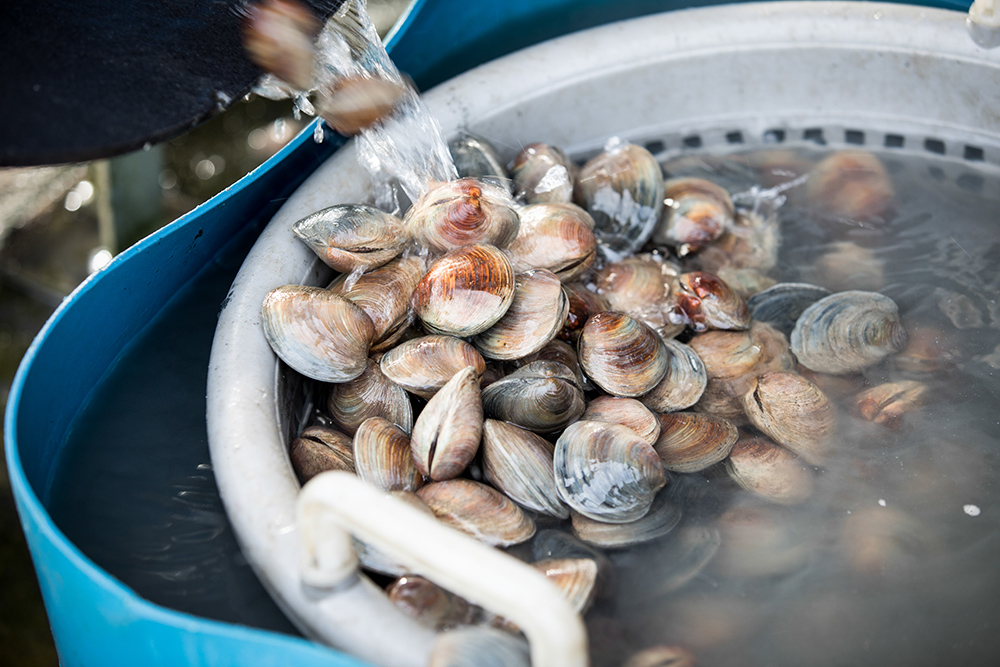By Dan Rahn
University of Georgia

Volume XXXI |
Each year the committee selects one plant from five classes -- annual, perennial, shrub, tree and vine -- from a long list of nominees and awards them Georgia Gold Medals.
"The selection process is tedious, sometimes resulting in heated debates prior to the final secret ballot," said Gary Wade, University of Georgia Cooperative Extension horticulturist who helped get the program started. "But the cream always rises to the top. In the end, the honors are always well deserved."
The committee decides the winners based on seasonal interest, outstanding or unusual qualities, ease of propagation, hardiness, adaptability, durability, pest tolerance and lack of invasiveness.
They announce the winners first to growers so they can have them available when the public promotions begin.
Here are the 2006 Georgia Gold Medal winners:
Cuphea species are dependable, low-maintenance annuals. They tolerate the heat and humidity of the South with extended bloom periods, attracting butterflies and hummingbirds like magnets. Three stand out. Firecracker plant (Cuphea ignea), about a foot tall, has abundant tubular, scarlet-red flowers edged in black. Tiny mice (Cuphea llavea), up to 2 feet tall, has flowers resembling the face of a mouse, with two red petals tinged in purple. And tall cigar plant (Cuphea micropetala) grows 3 to 5 feet tall with 2-inch-long, cigar-shaped, red-yellow-green blooms.
Perennial plumbago (Ceratostigma plumbaginoides) grows just 6 to 10 inches tall and spreads 1 to 2 feet wide. A terrific groundcover, it tolerates drought and deer and has a long bloom period. The plant dies back to the ground each year, then leafs out late in the spring, with shiny green leaves that turn bronze-red in the fall. Its medium-blue flowers emerge in late summer and keep coming until the fall frost.
Chinese Snowball viburnum (Viburnum macrocephalum 'Sterile') is a large, deciduous shrub that grows 10 to 15 feet tall with an equal spread. The showy white flower clusters, up to 8 inches across, look like giant snowballs, offering a virtual whiteout of flowers. The flowers emerge green, then gradually fade to pure white. Eventually, they become light brown. They're commonly cut and used, both fresh and dried, in floral arrangements.
Overcup oak (Quercus lyrata) grows well on dry, upland sites and adapts to many soils and growing environments. It also grows fast, particularly when it's young. It typically grows 50 feet high and equally wide but has been known to reach 125 feet in the wild. Its acorns, with warty caps almost covering the nut are a good food source for wildlife.
Amethyst Falls wisteria (Wisteria frutescens 'Amethyst Falls'), is an improved cultivar of our native American wisteria. It will climb 20 to 30 feet. But it's less vigorous, less invasive and much easier to manage than its Asian relatives. And while the Asian types may take 10 years or more to begin flowering, Amethyst Falls wisteria's fragrant, lavender-blue flowers start cascading from the foliage at 1 year old.
To learn more about on the Georgia Gold Medal Winners program, visit the Web at www.georgiagoldmedal.com. The site shows the plants the GPSC has chosen since 1994.
(Dan Rahn is a news editor with the University of Georgia College of Agricultural and Environmental Sciences.)






